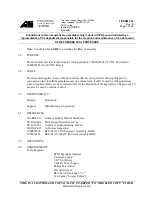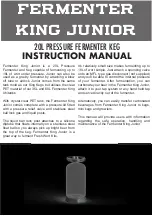
Synchronising during switchboard control
During switchboard control, if the operator wants to synchronise and close a breaker, the operator must use the switchboard to
operate the system. The operator manually adjusts the speed of the relevant equipment until the frequencies are almost the same.
The operator then finely adjusts the speed until the power sources are in phase. The phase synchronisation of the power sources
must be shown by a switchboard instrument, for example, a synchroscope. When the phases are within the synchronisation limits,
the operator closes the breaker.
Protections during switchboard control
CAUTION
The controller protections will not protect the system against all possible operator errors during switchboard control.
The controller protections are active during switchboard control, but there are no proactive checks for the operator inputs. This
means that while the controller is under switchboard control, it is possible for an operator to use switchboard operations to
potentially damage or destroy equipment.
Operator error during switchboard control
In a slow system, an operator accidentally increases the generator speed above the recommended speed by repeatedly
pressing the
GOV up
switchboard push-button.
If the speed increases past the set point for the
Overspeed 1
alarm, the timer for the alarm starts. If the generator speed
stays above the set point for longer than the allowed time, the
Overspeed 1
alarm activates and the generator shuts down.
If the speed increases past the set point for the
Overspeed 2
alarm, the alarm activates and the generator shuts down.
In the example the damage to the generator was minimised due to the active protections in the controller. However a more
dangerous situation could occur if a breaker is forced to close when the busbars are not synchronised.
For this reason, a well-designed switchboard (including a sync check relay) is essential for operating the system during switchboard
control.
5.3 Configuring breakers
5.3.1 Breaker commands
Inputs
The following inputs are not part of the breaker configuration and are optional. They can be used for commands to the controller.
Assign the inputs under
Configure > Input/output
. Select the hardware module, then select the input to configure.
Table 5.2
Breaker commands (optional)
Function
I/O
Type
Details
Breakers > [Breaker] > Command >
[*B] open
Digital input Pulse
This input has the same effect as pressing the
Breaker open
button on the display unit.
Breakers > [Breaker] > Command >
[*B] close
Digital input Pulse
This input has the same effect as pressing the
Breaker close
button on the display unit.
Breakers > [Breaker] > Command >
Block [*B] close
Digital input Continuous
The controller does not allow the breaker to close while this
input is active.
5.3.2 Pulse breaker
A pulse breaker closes or opens in response to a pulse from the controller.
DESIGNER'S HANDBOOK 4189340911K UK
Page 142 of 521
















































